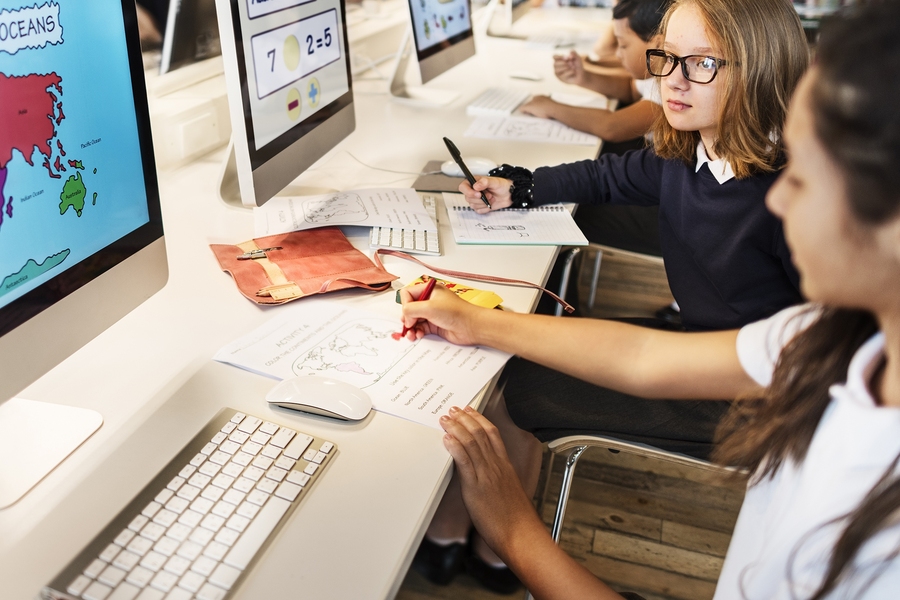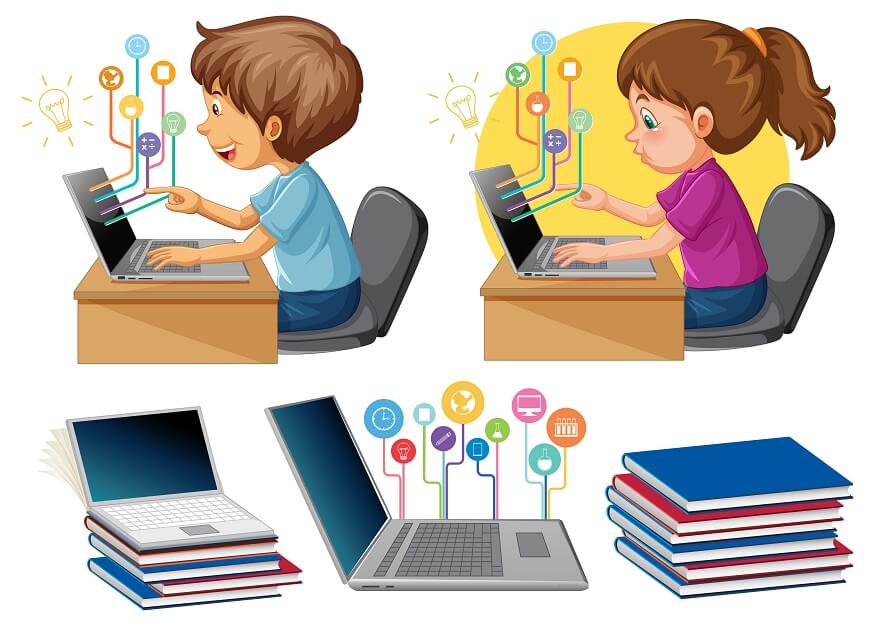Empower Your Company Workflow with the current AI Tools Available
Empower Your Company Workflow with the current AI Tools Available
Blog Article
The Role of Technology Education And Learning in Shaping Tomorrow's Workforce: Insights for Educators
As the landscape of employment remains to evolve drunk of technical innovations, the duty of modern technology education ends up being increasingly crucial in preparing pupils for future jobs. Educators are charged with furnishing students not just with technical effectiveness yet also with essential soft skills such as crucial thinking and partnership. By analyzing cutting-edge curricular methods and fostering collaborations with industry leaders, we can much better recognize exactly how to successfully cultivate a labor force that fulfills the demands of an electronic economic situation. What methods can educators utilize to bridge the space in between education and sector assumptions?

Significance of Modern Technology Education And Learning
In an increasingly electronic world, the significance of innovation education and learning can not be overemphasized. As sectors advance and integrate advanced technologies, a versatile education and learning in innovation becomes crucial for both personal and expert advancement. Innovation education and learning equips people with the skills needed to navigate the intricacies of modern-day workplaces, fostering adaptability in an environment defined by fast adjustment.
Additionally, innovation education advertises crucial reasoning and analytic abilities. AI Tools. By involving with different technological devices and systems, students improve their ability to examine details, draw connections, and develop cutting-edge remedies to real-world problems. This instructional emphasis not only prepares trainees for specific occupations however additionally cultivates a way of thinking that is essential for lifelong knowing
Furthermore, modern technology education and learning plays a crucial duty in bridging the electronic divide. By providing equitable accessibility to technical resources and training, academic institutions equip all trainees, no matter socioeconomic condition, to join the digital economy. To conclude, as we move even more into the 21st century, focusing on modern technology education is important for preparing a skilled labor force qualified of growing in an increasingly interconnected and technologically driven global landscape.
Trick Skills for Future Workforce

In enhancement, effectiveness in digital literacy is important; workers should navigate an array of software program tools and systems effectively. Partnership skills are also extremely important, as a lot of modern offices emphasize synergy throughout diverse, usually remote, environments. Creativity and technology will be vital in driving the advancement of new options and products in a competitive market.
Recognizing data analytics and cybersecurity principles is progressively essential, mirroring the expanding significance of data-driven decision-making and shielding delicate details. A fundamental expertise of artificial knowledge and equipment discovering will certainly encourage future professionals to utilize these innovations properly.
Educators needs to for that reason prioritize the integration of these skills right into their modern technology educational program, ensuring students are well-appointed to fulfill the needs of a vibrant job market. By promoting these proficiencies, we prepare learners not just for their initial tasks, but for lifelong jobs in an ever-evolving technological landscape.
Integrating Technology in Educational Program
Incorporating modern technology into the curriculum is important for modern-day education, with 85% of educators recognizing its relevance in enhancing student involvement and finding out results. As technology remains to advance, universities must adapt to prepare students for a future where digital literacy is critical. This integration entails not just the usage of electronic devices yet also the incorporation of innovative resources that promote critical reasoning, creative thinking, and collaboration.
A well-structured innovation curriculum should align with academic requirements while resolving the varied discovering demands of students. This can include a blend of on the internet platforms, interactive software program, and multimedia sources that deal with various knowing designs. Educators should obtain sufficient training to properly implement these innovations, making certain that they are furnished to promote a technically enriched knowing setting.
Furthermore, integrating technology into the curriculum enables real-world applications, connecting the space in between theoretical expertise and useful abilities. By engaging pupils with immersive and pertinent experiences, instructors can grow a workforce that is not only technologically efficient yet additionally adaptable and ready to satisfy the difficulties of tomorrow's task market. Stressing technology in education is not simply a pattern; it is a necessity for forming proficient future experts.
Ingenious Mentor Approaches
Embracing cutting-edge training approaches is essential for cultivating a efficient and interesting understanding environment in today's educational landscape. In innovation education, teachers have to use methods that not only capture students' rate of interest however also furnish them with the skills needed for future occupations. One description reliable strategy is project-based discovering, which urges pupils to involve in real-world troubles, advertising important reasoning and cooperation.
Additionally, incorporating gamification can enhance motivation and retention, making complex concepts more enjoyable and accessible. Insurance. Turned class, where trainees evaluate training content at home and take part in hands-on tasks during class, also prove valuable by optimizing classroom interaction and application of expertise
Moreover, using technology-enhanced learning tools, such as simulations and online laboratories, enables pupils to experiment and discover in a risk-free setting, cultivating innovation. Individualized finding out experiences, tailored to individual trainee requirements and learning designs, can further boost engagement and achievement.
Eventually, by integrating varied and innovative mentor strategies, instructors can develop a dynamic learning atmosphere that prepares students visit this website for the obstacles of tomorrow's workforce, guaranteeing they are not only educated however knowledgeable and likewise versatile.
Collaboration With Market Allies
Working together with sector partners is vital for connecting the gap between education and learning and the workforce. Such partnerships give students with functional understandings and experiences that are important for their professional growth. By involving with businesses, educators can better straighten educational program web content with the skills and competencies that companies look for. This placement guarantees that trainees are not only fluent in academic understanding but also have the hands-on experience essential for their future occupations.
Sector collaborations can take several forms, consisting of teaching fellowships, mentorship programs, and visitor talks. These campaigns permit pupils to use their understanding in real-world contexts, cultivating a much deeper understanding of sector standards and expectations. Furthermore, these collaborations can result in the advancement of customized programs that attend to certain labor force requirements, boosting the importance of modern technology education and learning.
Additionally, sector partners can contribute sources, such as devices and funding, that boost instructional offerings. By promoting a culture of cooperation, instructors and market leaders can collaborate to grow a knowledgeable labor force that is prepared to meet the obstacles of tomorrow. Eventually, these partnerships are essential for producing a seamless change from education to work, benefiting both students and companies alike.
Final Thought
To conclude, modern technology education works as a keystone for creating a proficient labor force efficient in browsing the complexities of an electronic economic climate. By stressing vital Bonuses skills such as digital proficiency, creativity, and information analytics, teachers can boost student preparedness for varied profession possibilities. The integration of cutting-edge teaching approaches and collaboration with market companions even more enhances the finding out experience, guaranteeing that trainees are not just equipped with expertise yet also prepared to fulfill the needs of an ever-evolving task market.
As the landscape of work continues to develop under the influence of technical advancements, the function of technology education comes to be increasingly crucial in preparing trainees for future jobs. As industries develop and integrate advanced innovations, a versatile education in innovation ends up being necessary for both specialist and individual development.Incorporating modern technology right into the educational program is important for contemporary education and learning, with 85% of instructors recognizing its importance in enhancing student engagement and learning outcomes. In innovation education, instructors have to use approaches that not just catch trainees' rate of interest however additionally furnish them with the skills necessary for future careers.In conclusion, modern technology education and learning offers as a foundation for creating a proficient labor force qualified of navigating the complexities of a digital economic situation.
Report this page